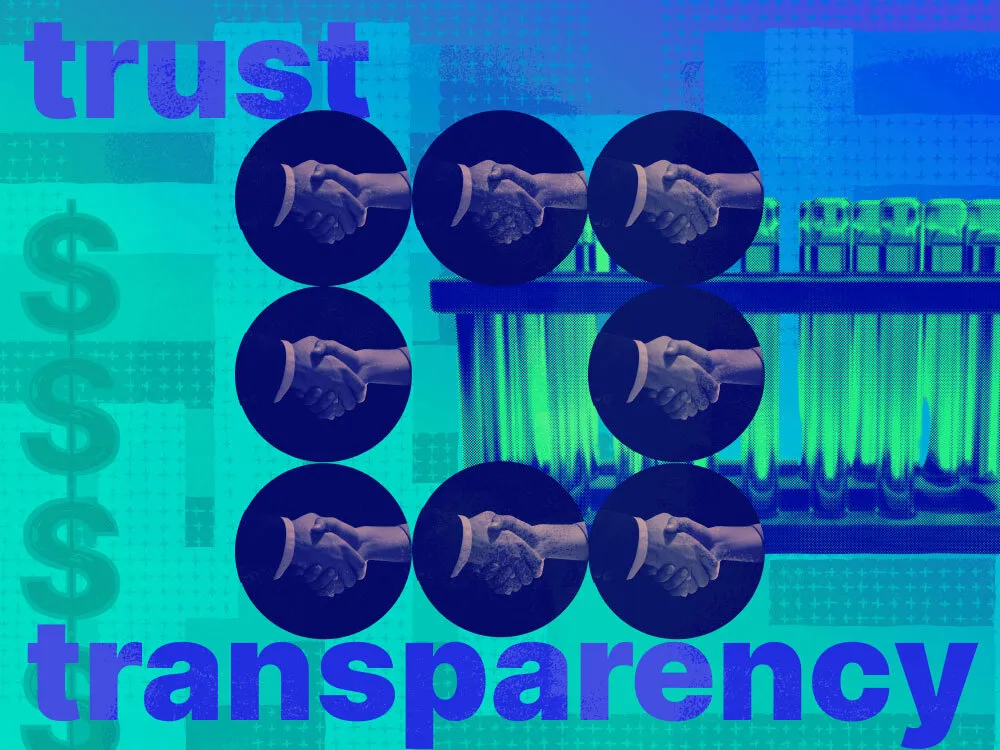Building a successful partnership is an art and a science and affiliate partnerships are no exception. They hold incredible potential for mutual growth, but only when built on a foundation of mutual trust. A win-win partnership doesn’t happen by chance — it’s the result of careful planning, transparent communication and iterative optimization.
In this article, we’ll explore five critical steps to building successful affiliate relationships that are powerful value generators for both the vendor and the affiliate partner.
Step 1: Identify audience overlap
Have you ever launched an affiliate partnership with great enthusiasm, collaborating to create and publish fantastic content, only for it to fall flat? I’ll admit I’ve been there.
More often than not, the culprit is a mismatch between the vendor’s target audience and the affiliate’s actual audience. This is one of the most common reasons affiliate partnerships fail.
If your product is designed for accountants in North America, partnering with a publisher whose audience is primarily software developers in Europe will likely be a wasted effort. Success starts with understanding your ideal customer profile (ICP) and ensuring that it overlaps with the affiliate’s audience. Ask yourself:
- What problem does my product solve and who has that problem?
- Where is my audience geographically located?
- What company size is my product designed for?
Even if just one of these factors is misaligned, the partnership is unlikely to succeed. By prioritizing relevance, you’ll ensure that your partnership is at least pointed in the right direction.
Step 2: Establish trust through transparency
I firmly believe that most affiliate partnerships with real potential to succeed never get off the ground due to a lack of trust. Without trust, neither side is willing to take the risks necessary to move the partnership forward.
Trust begins with transparency. Both parties need to be honest about their historical performance, goals and constraints. Vendors must share details about their affiliate marketing program’s past results, including earning potential and what types of campaigns have worked before. Affiliates, in turn, should provide insights into their audience demographics, promotional strategies and track record of driving customer acquisition.
It’s like dating: intimacy only builds when both sides are willing to show their true selves. Transparency lays the groundwork for a strong relationship, making it possible to align goals and collaborate effectively.

Download our guide: Critical points of trust within your ecosystem.
Step 3: Share risk and reward
Once trust is established, the speed of trust is unlocked and both sides become willing to share in both risk and reward. Then the partnership is able to move beyond the common standoff —where the vendor offers only revenue share while the affiliate partner demands a large upfront fee.
Experimenting with middle-ground commission structures like cost per lead (CPL) or hybrid models often provides the solution. These structures incentivize affiliates to drive high-quality traffic while allowing vendors to see results earlier in the funnel. The shorter feedback loop also accelerates optimization, helping both sides find what works faster.
That said, it’s okay to start cautiously with revenue-sharing models for affiliates you haven’t built trust with yet. Just remember, those partnerships likely won’t scale until trust and shared goals are firmly established.
You might also like: 10 key metrics that affiliate managers need to know.
Step 4: Start with small experiments
When someone hands you a bike, you wouldn’t jump straight into a high-speed downhill race. You’d ride it around a parking lot, test the brakes and get a feel for the balance. Affiliate partnerships should follow the same logic: start small, experiment and refine before scaling.
For instance, instead of offering $50 for an unlimited volume of free account signups, a vendor could offer $100 for up to 25 trial signups that require a credit card. Similarly, an affiliate might begin with a short-form video or social media post before committing to a full-scale YouTube review or in-depth blog series.
Small experiments allow both sides to test compatibility, evaluate initial results and build confidence without overcommitting resources. This approach reduces risk while paving the way for larger, more ambitious collaborations.
See more: Learnings from my first quarter as a B2B affiliate manager.

Step 5: Scale up with data-driven optimization
Launching a partnership is just the beginning. Once live, the real work begins: tracking performance, analyzing data and iterating to find the winning formula. Data is the ultimate guide — it reveals what to double down on, what to tweak, what to set aside and what to stop.
Start by measuring essential metrics like click-through rates, conversion rates, earnings per click (EPC) and ROI. Identify which campaigns are driving the highest quality leads or conversions and double down on those strategies. At the same time, don’t shy away from tweaking or discarding underperforming efforts.
Shared-risk models like CPL are particularly useful here because they shorten the feedback loop. By compensating affiliates earlier in the customer journey, both parties can gather insights and optimize faster. As the data reveals what works best, the partnership becomes more effective, scalable and profitable.
Building a win-win affiliate partnership takes time, effort and a willingness to collaborate. By starting with audience alignment, fostering trust through transparency and sharing both risk and reward, you create a foundation for success. From there, small experiments and data-driven optimization will guide your partnership to scale effectively.
Affiliate programs are most successful when both sides feel trusted and invested. By following these steps, you’ll ensure that your affiliate partnerships have integrity and relationships are profitable, sustainable and mutually rewarding.

















